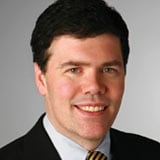This fund remains one of the top ways to buy a solid, diversified international portfolio and have confidence in its management, writes Russel Kinnel of Morningstar FundInvestor.
Despite losing its founding manager last fall, Harbor International (HAINX) is an exemplary foreign large-blend fund whose legacy should continue to grow.
The fund’s former lead manager, Hakan Castegren, died in early October 2010. While that was certainly a loss (he helped generate one of the best records among foreign-stock funds since its 1987 inception), the fund was well prepared for the transition.
Although the four remaining comanagers were named to the fund only in February 2009, they had all worked with Castegren for years. Comanager Jim LaTorre, for instance, became the team’s director of research in 1993. Ted Wendell joined Castegren’s team in 1985.
Howard Appleby and Jean-Francois Ducrest had both worked with Castegren for years as sell-side analysts before coming on board in 2002. (The fund continues to build its research cadre, having added a new analyst last year.)
Castegren still had final say on buy/sell decisions until 2009, but the team had long used a consensus-based approach to decision-making. This gives confidence that the fund’s past success owed to the efforts of the entire team rather than just to Castegren’s brilliance.
The fund has generated exceptional performance by focusing on the long term. Most active managers have an 18- to 36-month horizon when buying stocks. This is partly because, out of career risk, many feel that they can’t afford to wait any longer for a position to work out. As a result, many active managers end up focusing on similar catalysts over the same time horizon.
This fund’s management looks for catalysts that may not materialize for three to five years, opening it up to a broader range of opportunities. Rather than spending time trying to guess next year’s earnings for a company, the team looks for structural shifts that will affect industry pricing power and corporate competitive advantages, which drive profits over the long run.
This long-term focus keeps trading to a minimum, and the fund’s annual turnover is usually below 20%.
The fund’s returns are second to none, but interested investors should note that it has been a volatile performer from year to year. The fund’s ten-year Morningstar Risk ratings are among the highest in the foreign large-blend category. Yet that volatility hasn’t translated into poor bear-market performance, which is how many investors define risk.
The volatility stems in part from management’s willingness to embrace emerging markets and commodities-oriented companies more than most peers do. Its emerging-market stake is often 20% or so of assets, which is above the foreign large-blend average.
However, the fund has held up better than most peers during the past two bear markets. The fund’s calendar-year returns landed at or near the category’s top quartile during the 2000-02 bear market.
Although the fund took a beating during 2008’s crash in absolute terms, it was no worse than average. The fund’s only poor relative showing in recent years came during a rally in 2004.
Bottom Line
The fund’s Institutional share class sports a low 0.79% expense ratio, which places it among the cheapest fifth of actively managed institutional peers. Plus, the fund’s $50,000 minimum initial investment is quite reasonable by institutional standards.
The Investor share class has an average 1.16% expense ratio and a $2,500 minimum.The fund’s four co-managers have made an impressive commitment to the fund, with each having invested more than $1 million.
This has long been one of the best foreign-stock funds around. That conviction hasn’t changed even with the loss of one of the more successful managers in memory.
Subscribe to Morningstar FundInvestor here…
Related Reading:










